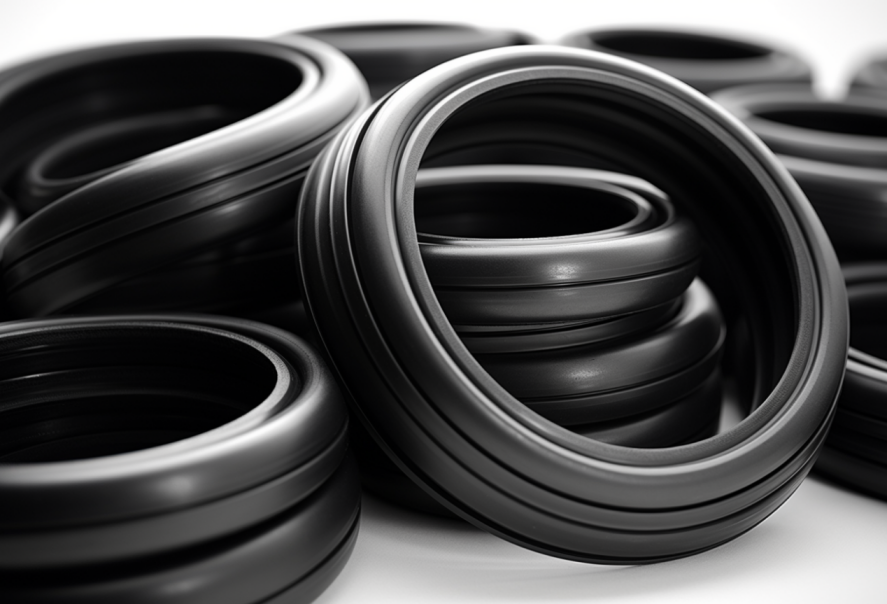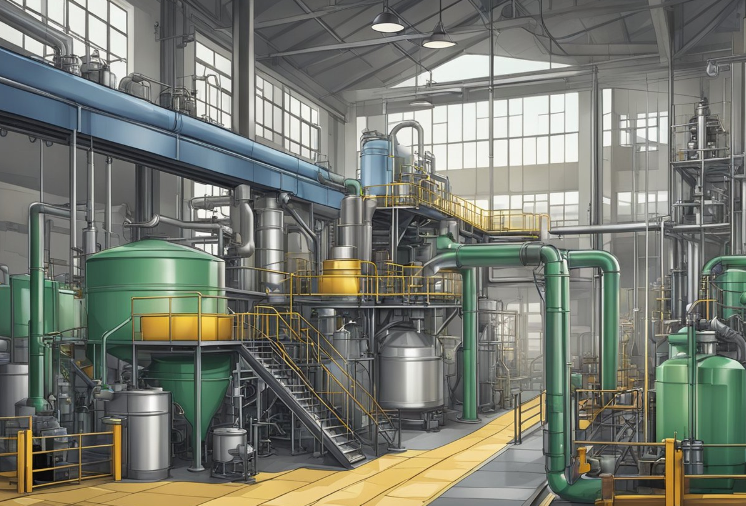What Makes Butyl Synthetic Rubber Impermeable to Air and Gases?
10/06/2024
Butyl synthetic rubber stands as a testament to human ingenuity, offering a versatile and durable material that finds its applications woven intricately across various industries. This elastomer, known for its exceptional impermeability to gases and liquids, has become an indispensable component in the production lines of automotive, pharmaceutical, and construction sectors, among others.

Importance in Various Industries
Automotive Industry
Butyl synthetic rubber plays a pivotal role in tire manufacturing, where its low air permeability ensures optimal tire pressure retention. Additionally, it finds applications in automotive seals, gaskets, and hoses, contributing to the efficiency and longevity of vehicles.
Pharmaceutical Sector
Its excellent resistance to chemicals and biological agents makes butyl rubber a preferred material for pharmaceutical stoppers and closures. These properties help maintain the integrity of medical products, safeguarding them from contamination and degradation.
Construction Applications
In the construction industry, butyl rubber serves as a waterproofing membrane, protecting buildings and infrastructure from moisture intrusion. Its flexibility and adhesive properties make it an ideal choice for sealing joints and seams in roofing and cladding systems.
History and Development
Origins of Butyl Rubber
The story of butyl rubber traces back to the early 20th century when researchers sought to develop synthetic alternatives to natural rubber. In 1937, William Sparks and Robert Thomas at Standard Oil of New Jersey (now ExxonMobil) succeeded in polymerizing isobutylene to create what would later be known as butyl rubber.
Key Milestones
1937: Sparks and Thomas discover the polymerization process for isobutylene.
1943: Commercial production of butyl rubber begins, marking a significant milestone in the synthetic rubber industry.
1957: Introduction of halogenation, enhancing the polymer’s properties and expanding its applications.
Role of Standard Oil of New Jersey
Standard Oil of New Jersey played a pioneering role in the discovery and development of butyl rubber. Through relentless research and innovation, the company unlocked the potential of isobutylene, laying the groundwork for the widespread adoption of this synthetic elastomer.
Composition and Manufacturing
Chemical Structure
Butyl rubber primarily consists of long-chain polymers of isobutylene, a branched-chain hydrocarbon. The addition of small amounts of isoprene or other comonomers enhances its elasticity and processability.
Polymerization Process
The polymerization of butyl rubber involves the catalytic reaction of isobutylene with a small amount of a co-catalyst, typically aluminum chloride or aluminum bromide. This process yields high molecular weight polymers with excellent tensile strength and elongation properties.
Raw Materials
The production of butyl rubber relies on isobutylene, which is obtained as a byproduct of petroleum refining. Other raw materials, such as co-catalysts and stabilizers, are necessary to facilitate the polymerization process and ensure the desired performance characteristics of the final product.
Properties and Characteristics
Impermeability to Air and Gases
One of the most notable properties of butyl synthetic rubber is its exceptional impermeability to air and gases. This makes it an ideal material for applications where maintaining pressure or preventing leakage is critical, such as tire inner tubes and inflatable products.
Resistance to Heat, Aging, Weathering, and Chemicals
Butyl rubber exhibits remarkable resistance to heat, aging, weathering, and a wide range of chemicals. This inherent durability allows it to withstand harsh environmental conditions and prolonged exposure to corrosive substances without significant degradation, making it a preferred choice for seals, gaskets, and O-rings in various industries.
Flexibility Over a Wide Temperature Range
Another key characteristic of butyl rubber is its flexibility over a broad temperature range. Unlike some other elastomers that may become brittle in cold temperatures or lose their elasticity in high heat, butyl rubber maintains its flexibility and mechanical properties across a wide spectrum of operating conditions.
Applications
Tire Inner Tubes
Butyl rubber’s low permeability to air makes it an essential component in tire inner tubes, where maintaining optimal tire pressure is crucial for vehicle performance, fuel efficiency, and safety. Its ability to resist punctures and leaks ensures reliable performance on the road.
Seals, Gaskets, and O-rings
The durability and chemical resistance of butyl rubber makes it an ideal material for seals, gaskets, and O-rings in various industrial applications. Whether sealing joints in automotive engines or preventing leaks in industrial machinery, butyl rubber provides long-lasting performance and reliable sealing properties.

Pharmaceutical Stoppers
In the pharmaceutical industry, the impermeability and inertness of butyl rubber make it an ideal material for manufacturing stoppers and closures for vials and bottles. Its ability to maintain the integrity of medical products and protect them from contamination ensures the safety and efficacy of pharmaceutical formulations.
Adhesives
Butyl rubber’s adhesive properties make it suitable for use in the formulation of pressure-sensitive adhesives. These adhesives find applications in bonding various substrates, including metal, glass, and plastics, in automotive, construction, and packaging industries.
Chewing Gum
Butyl rubber is also used in the production of chewing gum, where its elasticity and chewiness contribute to the texture and consistency of the final product. Its inertness and non-toxicity make it a safe choice for food contact applications.
Other Industrial and Consumer Products
Beyond the aforementioned applications, butyl rubber finds its way into a wide range of industrial and consumer products, including conveyor belts, sporting goods, inflatable structures, and waterproofing membranes, among others. Its versatility and durability make it a preferred choice for manufacturers seeking reliable elastomeric materials.
Advantages and Future Outlook
Advantages of Butyl Rubber over Other Synthetic Rubbers
Compared to other synthetic rubbers, butyl rubber offers several distinct advantages, including superior air and gas impermeability, excellent resistance to heat, aging, and chemicals, and flexibility over a wide temperature range. These properties make it a preferred choice for applications where durability, reliability, and performance are paramount.
Emerging Trends and Developments in its Application
As technology advances and new challenges arise, the application of butyl rubber continues to evolve. Emerging trends include the development of enhanced formulations with improved mechanical properties, such as higher tensile strength and elongation, as well as the exploration of new applications in emerging industries, such as renewable energy and medical devices.
Potential for Further Advancements and Innovations in Butyl Rubber Technology
Looking ahead, the future of butyl rubber holds promise for further advancements and innovations. Research efforts are focused on optimizing manufacturing processes to reduce costs and environmental impact, as well as exploring novel chemistries and formulations to enhance performance and expand the range of applications. With ongoing investments in research and development, butyl rubber is poised to remain a durable innovator in the synthetic rubber industry for years to come.
Conclusion
Butyl synthetic rubber stands as a testament to human ingenuity and innovation. From its humble beginnings in the laboratories of Standard Oil of New Jersey to its widespread applications in automotive, pharmaceutical, and construction industries, butyl rubber continues to play a crucial role in modern manufacturing processes. As technologies evolve and new challenges emerge, the versatility and durability of butyl rubber ensure its enduring relevance in a rapidly changing world.




